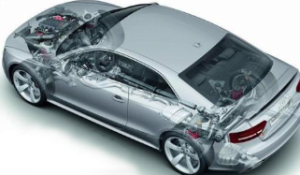Automotive Axle Noise
Automated Test System for Automotive Gear Sets for Transmission Error & Axle Noise
When a Tier 1 automotive supplier required a production line test system to assess final drive transmission errors, they naturally called upon the expertise of Signalysis to deliver a solution.
Challenges
- Objectively Identify Root Cause of Errors
- Validate Functional Specifications, Ergonomics and Human Machine Interface (HMI)
- Have a Minimal Impact on Production Time
An Automated Solution
Signalysis designed and developed an IQC™ test system that was integrated into the production line for 100% unit testing.
Quality Inspection System
The IQC system includes a computer control system, multi-channel data acquisition system, digital I/O interface hardware, accelerometers / automated placement devices and SigQC™ analysis software.
The system was integrated with a 3rd party test station to conduct 100% part inspection. The system acquired and processed running data, assessed pass/fail, and archived the pertinent data. The inspection station was installed at the earliest point possible in the assembly line to identify “bad” gear sets prior to full axle build.
System Functions
- Confirms the test cell achieved correct speed and quasi-static running torque
- Calculates dynamic torque amplitude at mesh frequency for each steady state torque condition
- Calculates peak torque value at mesh frequency for torque sweep
- Compares torque amplitude to established limits to assess pass- fail limits
- Exports metric values to central manufacturing database for SPC activities
- Automatically processes data from different models (i.e., F/D ratios)
Delivering Results
The Signalysis IQC test system met all test objectives enabling our customer to:
- Pinpoint and eliminate causes of errors
- Effectively validate aesthetic and functional specifications
- Minimize the impact on overall production cycle time
- Eliminate cost and subjectivity associated with human inspection

